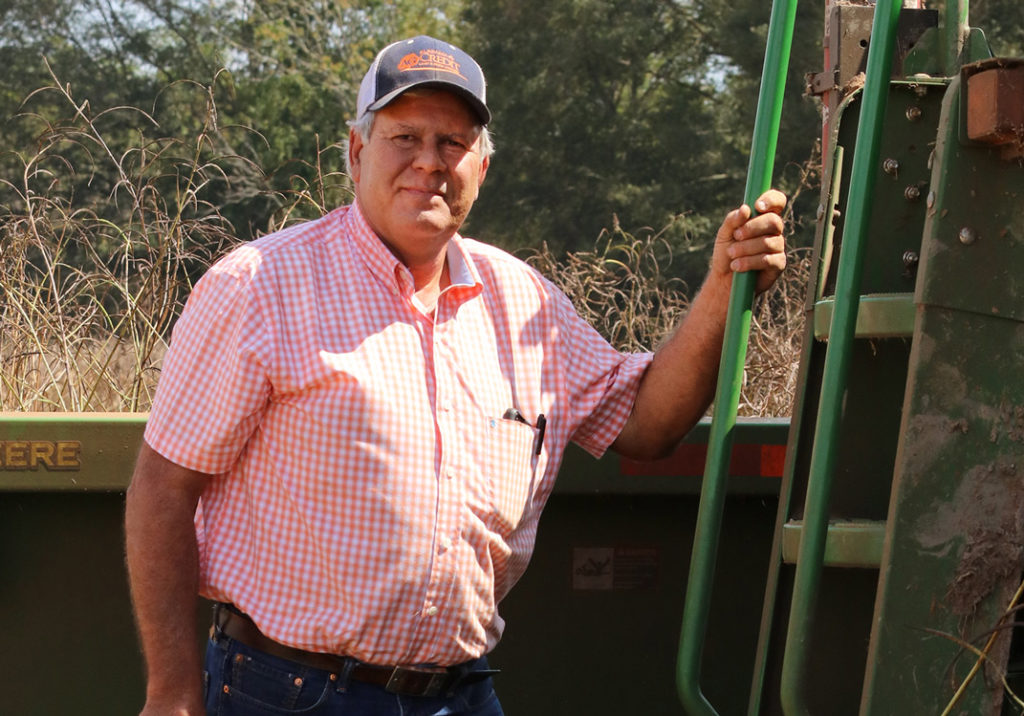Yields High, Prices Low For State’s Corn Crop

Alabama farmers planted fewer acres of corn this year, but high yields could elevate the harvest to near record levels.
“Good yields are always a blessing,” said the Alabama Farmers Federation’s Carla Hornady. “Farmers need high yields to help offset low prices this year.”
U.S. Department of Agriculture spring reports showed Alabama farmers planted 240,000 acres of corn, a 27 percent drop from 2016 when farmers planted 330,000 acres. Last year’s severe drought reduced yields for most farmers, even those with irrigation, said Hornady, the Federation’s Cotton, Soybean and Wheat & Feed Grain divisions director.
“It’s possible the state’s 2017 corn harvest could exceed last year’s because of the outstanding yields,” she said.
Timely rain in spring and early summer set the stage for a good crop, and fall harvest conditions remained favorable for most areas of the state. Many farms had rain throughout the summer, which reduced irrigation demands — an input expense that can eat away at farmers’ profits, she said.
“Irrigation is a good tool to ensure you make a crop if it’s dry,” Hornady said. “But when Mother Nature provides the rain you need, and you don’t have to run an irrigation pump and pivot, it helps cuts down on the amount of money a farmer has to put into a crop.”
Steve Tanner of Greenville, who farms in west Butler County and east Crenshaw County, said plentiful rain helped him produce his best corn crop ever. Continued rain throughout the summer and fall, , however, created harvest challenges.
“Normally, we have an average yield of 130-135 bushels per acre,” said Tanner, who planted 1,000 acres of non-irrigated corn. “This year, we probably averaged 170 bushels per acre and in some low spots over 200 bushels an acre. But those low spots, where the best corn is, it’s hard to make headway with harvest because a combine can get stuck pretty quick.”
Like many Alabama farmers, Tanner’s corn ends up as poultry and livestock feed. The Butler County Farmers Federation vice president said area poultry companies provide a ready market for much of his corn, but harvest logistics can be challenging.
“I prefer to haul my corn straight from the field to the (grain) elevator,” said Tanner, who also has on-farm storage bins as an option. “But sometimes, drivers wait in line for hours to get unloaded because everybody else is picking corn then, too.”
About 250 miles north of Tanner, Lauderdale County farmer James Walker, averaged 185 bushels of corn on each of the 1,200 acres he planted this year. It isn’t the best yield he’s ever had, but he said it’s enough to make a profit.
“We typically average about 140-150 bushels an acre,” said Walker, a member of the Federation’s State Wheat & Feed Grain Committee. “This year we got rain when we needed it, and I was able to market some of my corn early for $4 a bushel.”
That’s above the December market price for corn, which in mid-October was $3.50 per bushel.
With the corn crop done, Tanner and Walker moved on to harvest their next crop — peanuts for Tanner and soybeans for Walker. Both men, like all farmers, spoke of challenges faced with hurricanes earlier this year.
“The saddest thing you’ll ever see is a farmer who made a good crop and then can’t get it in,” Walker said.
